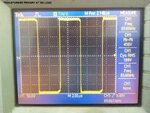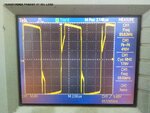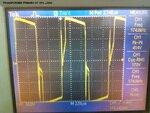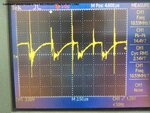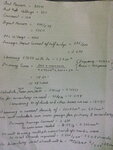phoenix87
Newbie level 5
hi ,
i have built a half bridge smps with pfc front end for 2 X 200W class - D . it works fine but the wave forms that i see is troubling me .... Can any one have a look and tell me if i am doing it wrong ..... the smps has a open voltage loop . wat is troubling me is primary waveform at 90% load the wave form should be flat during the dead time which it is not ....
View attachment Protel Schematic.pdf
regards
phoenix
i have built a half bridge smps with pfc front end for 2 X 200W class - D . it works fine but the wave forms that i see is troubling me .... Can any one have a look and tell me if i am doing it wrong ..... the smps has a open voltage loop . wat is troubling me is primary waveform at 90% load the wave form should be flat during the dead time which it is not ....
View attachment Protel Schematic.pdf
regards
phoenix
